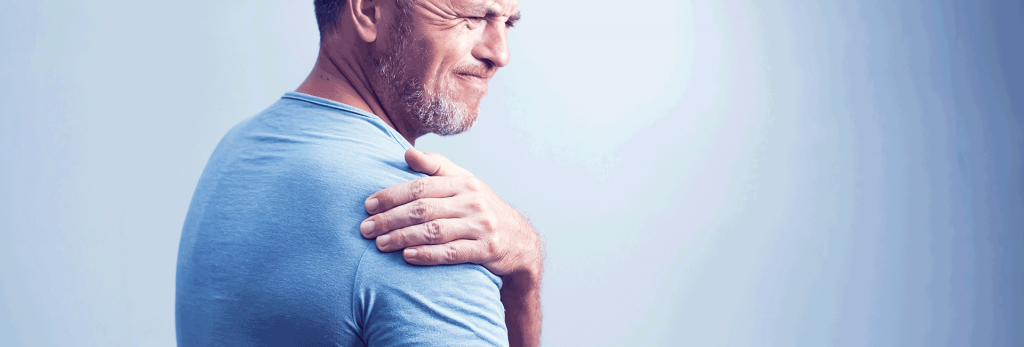Thank you for your question! Without doing an examination, we are not able to comment on your specific condition, however, we can offer you some general advice that is often helpful in similar situations to yours.
There are a few potential explanations for your symptoms. Depending on the location of your tendinosis and interstitial tear, it’s possible lingering deficits in strength, stability and control of your shoulder and shoulder blade could contribute to your shoulder blade positioning. If present, this can greatly influence the position of your humeral head relative to the joint surface during movement, exercises, and in static positions, potentially resulting in discomfort and “pinching” sensations.
Tightness in muscles and other joints that surround and comprise of the shoulder girdle could also be contributing. If these types of restrictions do not allow an appropriate amount of movement, then this could also impact shoulder positioning and symptoms.
It is also very common for the neck to refer pain into the shoulder and/or shoulder blade and could be contributing to the symptoms you are experiencing. This could include joint or muscle referral pain to the shoulder blade or could be a nerve referring the pinching sensation to that region. With your history of recent rehab for your shoulder, it is not uncommon for body parts, above or below the affected region, to compensate or be affected and it would be beneficial to seek further re-assessment to assess your neck as a possible contributor to symptoms.
It’s quite possible you could be experiencing scapular winging and pinching discomfort at the same time. Asymmetries are normal throughout the body, however, if these asymmetries begin to cause pain and functional limitations, then it’s important to address them accordingly with a referral to physical therapy.
It is normal to experience some discomfort with exercises in the presence of tendinosis as long as your symptoms do not exceed a 4/10 on the pain scale and soreness does not last longer than 24 hours following your exercises. Additionally, even with a comprehensive program, if exercises are not completed correctly, they may contribute to some of the discomforts you are experiencing. If you continue to experience symptoms, you should schedule a follow-up with your physical therapist or consult another practitioner.
We offer a range of services that could benefit your condition.

PT for shoulder pain and injury.
As physical therapists, we know the importance of movement for overall health and well-being. From injury recovery to achieving optimal performance, our passion is to help every patient reach their goals and live an active, pain-free life. Get started with PT today!


